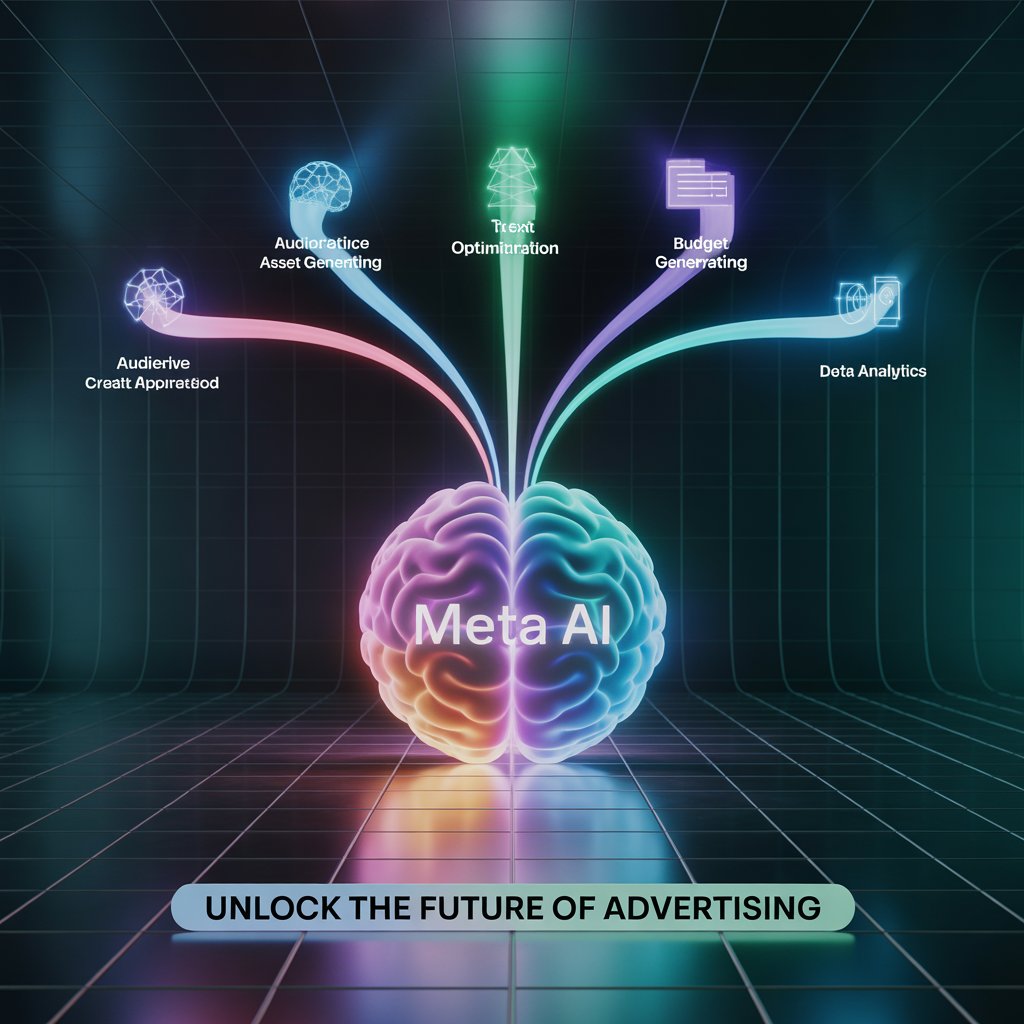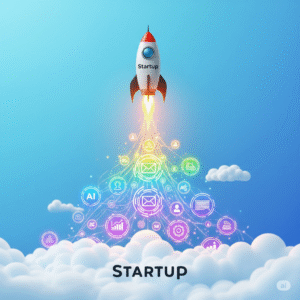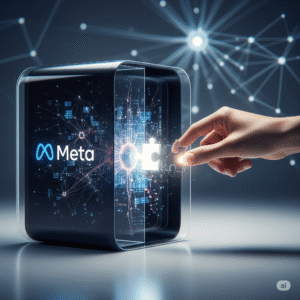As a digital marketer, have you ever felt like there’s an invisible force working behind the scenes of your Meta ad campaigns? You set up a campaign, feed it some creative, and suddenly, it starts finding customers you never would have thought to target. Performance stabilizes, and results start flowing in with less manual tinkering than ever before. This isn’t luck; it’s by design. This unseen force is a sophisticated and ever-evolving artificial intelligence, and its powerful Meta AI features are the secret sauce behind today’s most successful advertising efforts.
For years, the narrative was about manual control—A/B testing ad sets, tweaking bids, and micromanaging budgets. Today, that narrative has flipped. The goal is no longer to outsmart the algorithm but to empower it. Your role has shifted from a frantic operator to a strategic director, feeding the AI the right inputs and letting it handle the complex execution. In this article, we’ll pull back the curtain on five of the most impactful Meta AI features that are secretly supercharging your campaigns. Understanding these systems isn’t just about satisfying curiosity; it’s about fundamentally changing how you approach your strategy to unlock new levels of growth and efficiency.
1. Advantage+ Campaigns: The Ultimate Facebook Ad Automation
Perhaps the most visible and powerful of all the Meta AI features is the Advantage+ suite of products, particularly Advantage+ Shopping Campaigns (ASC). If you’re running e-commerce ads, this is the AI powerhouse doing the heaviest lifting. It represents the pinnacle of Facebook ad automation, moving beyond simple tasks to take over entire campaign strategies. Instead of you building separate campaigns for prospecting and retargeting, ASC consolidates them into one intelligent system.
You provide the destination (a “Purchase” conversion), the fuel (your best creative assets), and a budget. The AI takes it from there. It analyzes trillions of data points in real-time to determine who should see your ad, when they should see it, and on which placement (Facebook Feed, Instagram Reels, etc.) it will be most effective. It dynamically shifts budget between finding brand new customers and nurturing existing ones, a task that would require constant human monitoring to perform even a fraction as effectively. This is a core benefit of AI in advertising: replacing complex, time-consuming manual processes with a goal-oriented machine that never stops learning.
Case Study: L’Oréal’s Success with Advantage+ Shopping
Global beauty giant L’Oréal turned to Advantage+ Shopping Campaigns to drive sales for its Lancôme brand during a key sales period. Instead of relying on their historically complex campaign structure segmented by various audiences, they embraced the simplicity and power of this specific Meta AI feature. By consolidating their efforts into ASC, they trusted the AI to find the most valuable shoppers. The results were stunning: Lancôme saw a 13% increase in return on ad spend (ROAS) and a 17% decrease in cost per purchase. This case highlights how even massive brands with deep resources benefit from handing the reins to the AI, allowing it to optimize the entire customer journey automatically.
2. Dynamic Creative and Asset Customization: Your Personal AI Art Director
How many hours have you spent creating dozens of ad variations—different headlines for different images, unique calls-to-action for different videos? One of the most time-saving Meta AI features is Dynamic Creative Optimization (DCO). This tool acts as your personal AI art director, taking all your individual assets and mixing and matching them on the fly to create the perfect ad for each person.
You can load a single ad with up to 10 images or videos, 5 headlines, 5 primary text options, and 5 descriptions. The AI then runs a massive, automated multivariate test, discovering which combinations resonate most with different segments of your audience. It learns that one user might respond best to a video with a casual tone, while another converts after seeing a static image with a direct, benefit-driven headline. Taking this a step further is Asset Customization for Placements, where the AI automatically crops an image to fit Instagram Stories perfectly or generates captions for a video, ensuring a native and seamless user experience across all placements.
How These Meta AI Features Drive Hyper-Personalization at Scale
This level of personalization was impossible just a few years ago. The AI isn’t just finding the single “best ad”; it’s curating a personalized ad experience for millions of individual users simultaneously. This continuous optimization fights ad fatigue, increases relevance scores, and ultimately leads to better conversion rates. It’s a prime example of AI marketing in action, delivering a tailored message without the impossible manual effort it would traditionally require. These subtle Meta AI features work in tandem to ensure your creative is not only seen but is also as effective as possible for every single impression.
3. The Delivery System’s AI: Beyond Just Targeting
When we talk about Meta’s AI, we often focus on audience targeting. But some of the most crucial Meta AI features operate at a much deeper level within the ad delivery system. The AI isn’t just deciding who to show an ad to; it’s making billions of micro-decisions every second about how to show it. This includes managing the auction bid, pacing your budget throughout the day to maximize results, and predicting the likelihood of a user taking a desired action.
Think of it this way: if audience targeting is the GPS telling you where to go, the delivery system’s AI is the engine, transmission, and fuel-injection system working in perfect harmony. This became even more critical after the privacy changes in Apple’s iOS 14. With less user-level data available, Meta now relies heavily on AI modeling to fill in the gaps, analyze conversions, and optimize campaigns effectively. Understanding the ad auction is key, and resources like HubSpot’s Ultimate Guide to Facebook Advertising provide an excellent foundation for how this complex system works behind the scenes.
4. AI-Powered Text and Image Generation: The Creative Assistant
One of the most exciting recent developments is the integration of generative AI tools directly into the Ads Manager platform. These Meta AI features act as a creative assistant, helping you overcome creative bottlenecks and test new ideas at an unprecedented speed. These tools currently include:
- Text Generation: Struggling with copy? The AI can write variations of your primary text, headlines, and descriptions based on a few keywords or your landing page content.
- Image Generation & Expansion: You can generate entirely new backgrounds for your product shots or use the “Image Expansion” feature to automatically adapt a square image for a vertical 9:16 format (like Reels or Stories), ensuring your creative looks great everywhere.
Learning how to leverage Meta AI in the creative process is becoming a critical skill. It lowers the barrier for small businesses to produce high-quality assets and allows larger teams to dramatically increase their testing velocity.
Augmenting Meta’s Creative AI with External Tools
While Meta’s built-in tools are powerful for execution, savvy marketers augment them with external AI for strategy and analysis.
- OpenAI’s ChatGPT or Google’s Gemini can be used for deeper strategic work, like developing detailed customer personas, brainstorming high-level marketing angles, or scripting entire video ads before you even open Ads Manager.
- Tableau or Power BI can connect to your ads data to create dashboards that track performance against true business KPIs, like profit margin and customer lifetime value (LTV), giving you insights Meta’s dashboard alone cannot.
5. Automated Rules and AI-Driven Insights
Finally, don’t overlook the simpler forms of automation and analysis that can protect your budget and surface opportunities. While not as flashy as generative AI, “Automated Rules” are a practical application of Facebook ad automation. These are simple “if-then” commands you can set up to manage your campaigns. For beginners, this can be a lifesaver.
Here are a few simple workflows you can implement:
- Budget Protection: If “Cost Per Purchase is greater than $50” on an ad set, then “Pause ad set.”
- Frequency Cap: If “Frequency is greater than 3” in 3 days on a retargeting ad set, then “Turn off ad set” to prevent annoying your audience.
- Scaling Winners: If “ROAS is greater than 4x” and “Spend is less than $100 today,” then “Increase budget by 20%.”
Alongside rules, the “Insights” tab in Ads Manager is where Meta’s AI proactively analyzes your performance and offers suggestions. It might point out audience demographic that is performing surprisingly well or a placement that is driving down your costs, giving you data-backed ideas for your next campaign.
Case Study: “The Wicker Boutique” – A Small Business Example A hypothetical small e-commerce store, “The Wicker Boutique,” is run by a solo entrepreneur with limited time. She uses an Advantage+ Shopping Campaign to handle her core advertising. To protect her small budget, she sets up an Automated Rule to pause any ad if its cost per purchase exceeds her target profit margin for three consecutive days. This combination allows her to trust the primary Meta AI features to find customers while the rule acts as a safety net, giving her the peace of mind to focus on product development and customer service.
Conclusion: Your New Role as an AI Strategy Director
The evolution of Meta AI features has irrevocably changed the landscape of digital advertising. The days of granular, manual management are being replaced by an era of strategic partnership with artificial intelligence. The five features we’ve explored—from the all-encompassing power of Advantage+ to the subtle efficiency of Dynamic Creative—are all designed to free you from tactical execution so you can focus on what matters most: your brand’s strategy, your offer, and your creative.
Your job is no longer to be the best plate-spinner in Ads Manager. Your job is to be the best “AI Director”—to provide the machine with a clear vision, compelling creative fuel, and accurate data. By understanding and embracing these powerful Meta AI features, you can stop fighting the algorithm and start making it your most valuable employee.
the Evolution of Facebook Ads AI from CBO to ASC
Meta Ads Algorithm in 2025 Is it a Black Box?
The 15-Year Vet’s Guide to Meta Ads AI: What You Actually Need to Know in 2025



